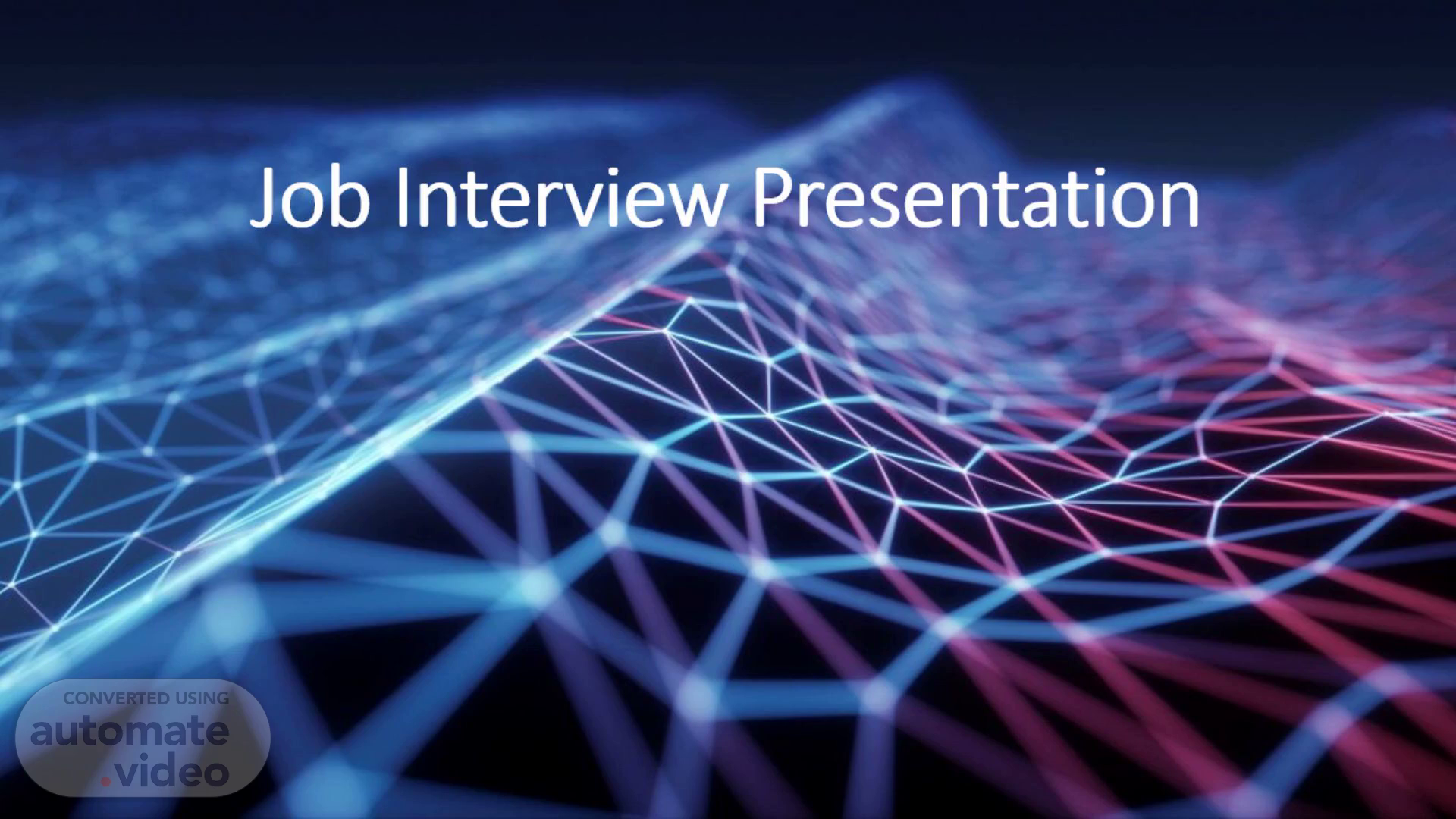
Job Interview Presentation
Scene 1 (0s)
[Audio] Job Interview Presentation By Vincent Vormawor.
Scene 2 (18s)
[Audio] The interview will concentrate on networking basics and consist of ten questions covering networking devices and protocols. Let’s begin.
Scene 3 (29s)
[Audio] The three basic Local Area Network (L-A-N--) Topologies are: Bus Star and Ring Topologies and are described as follows; Bus Topology: This is a straightforward setup in which all devices are interconnected to a single central cable like beads on a string. Data travels through the connection and each device independently verifies whether the data is intended for it. Star topology: In this setup all devices are connected to a single hub or switch which acts as a central traffic controller. Data packets are routed from one device to another via this central hub or the switch Ring Topology: Devices are linked in a closed loop resulting in a ring. Data moves in one route around the ring passing via each device..
Scene 4 (1m 19s)
[Audio] The bus topology connects all devices to a central cable similar to beads on a string. Data travels electronically along the cable and each device determines if it is directed to it. Advantages: It is easy and affordable to set up. Disadvantages: A single cable failure can disrupt the entire network and performance may suffer as the number of devices grows. A star topology connects devices to a central hub or switch. Data flows between devices via the central hub/switch. Advantages: It is more reliable than bus topology because a single device failure does not disrupt the entire network. It is also easy to diagnose and treat. Disadvantages: It depends on the central device (hub/switch) which can be a single point of failure. It needs more cabling than a bus topology. Ring Topology connects devices in a closed loop making a ring. Data moves in one route around the ring passing via each device. Advantages: Can provide good performance with deterministic data flows. Disadvantages: A single device failure might completely disrupt the network and adding or deleting devices can be more difficult. Mesh topology involves interconnected devices that form a web-like structure. Data can take multiple paths providing redundancy and flexibility. Advantages: It is highly reliable and fault-tolerant. It provides efficient data routing since various pathways are available. Disadvantages: It is more difficult to set up and manage than other topologies necessitating more cabling. Hybrid topology combines two or more fundamental topologies (bus star ring mesh) to produce a unique network architecture. Advantages: It allows you to adapt the network to your requirements and harness the characteristics of various topologies. Disadvantages: It may be more challenging to design deploy and administer than simple topologies..
Scene 5 (3m 20s)
[Audio] In response to this question: The 7th Layer is Application 6th is Presentation 5th Session 4th Transport 3rd Network 2nd Data Link 1st Physical.
Scene 6 (3m 36s)
[Audio] Application This layer interacts directly with user applications providing services like file transfer email and web browsing. Presentation Prepares data for the application layer by handling encryption decryption compression and formatting. Session Establishes manages and terminates device communication sessions. Transport Ensures reliable data transfer between devices by handling segmentation error checking and flow control. Network Routes data packets across networks by determining the best path for data to travel. Data Link Provides error-free data transmission between network devices on the same physical link. Physical This layer defines the physical characteristics of network transmission including cables connectors and electrical or optical signals.
Scene 7 (4m 28s)
[Audio] It is the point at which operational control of ownership shifts from the service provider (the I-S-P--) to the customer (the United States Cyber Command). That is it is a physical site where the distributor's (I-S-P--) ownership of distribution equipment (including connection assets) terminates with the client (United States Cyber Command). This point is sometimes referred to as the minimal point of entrance. It marks the transition from the service provider's obligation (I-S-P--) to that of the customer (United States Cyber Command). It is the location where a service provider's wire crosses or enters a structure often outdoors or in the basement..
Scene 8 (5m 9s)
Question 6: Our teams operate and encounter all types of devices. Provide a brief description of each of the following common network devices:.
Scene 9 (6m 7s)
[Audio] Protocol Port HTTP 80 SMTP 25 SNMP 161 DNS 53 Https 443 DHCP 67 (Server) 68 (Client) Telnet 23.
Scene 10 (6m 22s)
[Audio] The class ranges are: Class A: 0.0.0.0 127.255.255.255 Class B: 128.0.0.0 191.255.255.255 Class C: 192.0.0.0 223.255.255.25.
Scene 11 (6m 53s)
[Audio] The default subnet masks assigned to each network class are: Class Format Default Subnet Mask A network.host.host.host 255.0.0.0 B network.network.host.host 255.255.0.0 C network.network.network.host 255.255.255.0.
Scene 12 (7m 24s)
[Audio] Autonomous systems are the fundamental building elements of the internet enabling efficient routing policy enforcement and scalability across the vast network of connected networks that make up the global internet. Think of the internet as a gigantic road system. Under this system Autonomous Systems operate similarly to individual states or provinces. Each state has its road network (internal networks inside the AS) but they all connect and interact via traffic rules (routing policies). Each state's primary transportation agency (administrative control) oversees these internal roads and their connection to the more extensive highway system. Autonomous Systems bring significant benefits to the internet infrastructure. They enhance scalability efficiency policy enforcement and hierarchical routing. By breaking down the internet into smaller more manageable autonomous systems we can effectively govern it. Each AS can establish its own routing laws to meet specific needs and facilitate hierarchical routing across different internet networks..
Scene 13 (8m 33s)
[Audio] Thank You! It is a joy speaking with you and I look forward to hearing from you soon..